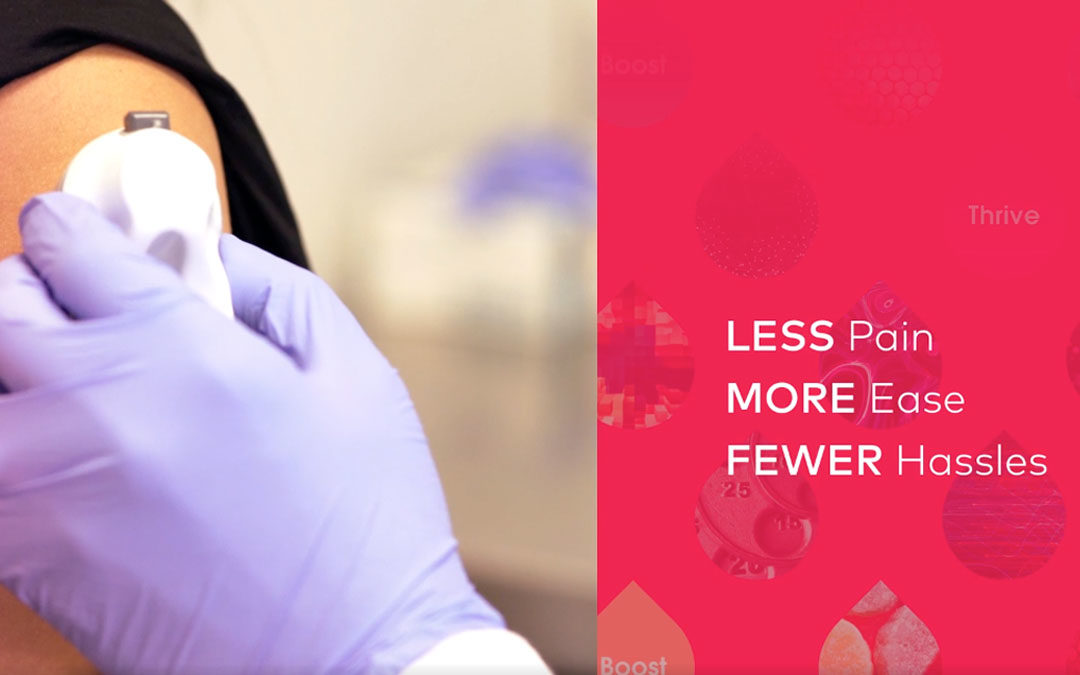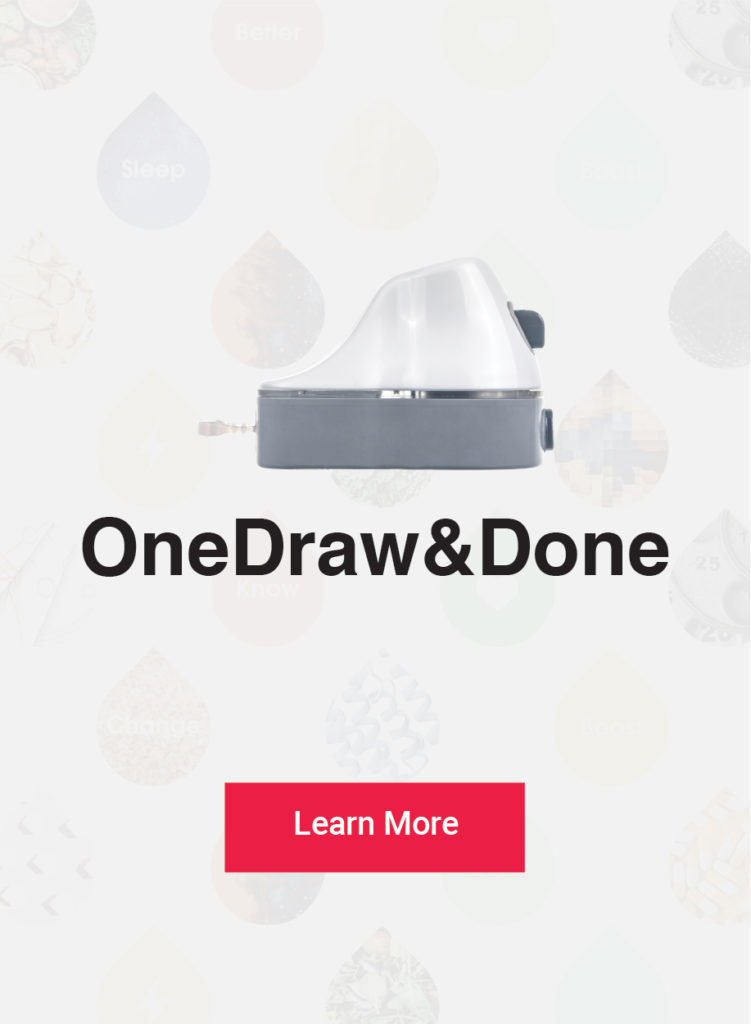Thinking Beyond the Classic Blood Draw
Blood draw and analysis are keystone components of modern healthcare, informing physicians about many diverse aspects of a patient’s health. In the past, most blood tests were conducted via venipuncture: the process of drawing blood using a traditional syringe and needle.
Today, however, there are several viable ways to draw blood. Here, we will provide an overview of different blood draw methodologies, discussing standard use cases and the steps involved. We will also showcase Drawbridge Health’s exciting new blood draw technology, the OneDraw™ Blood Collection Device, which is cleared by the FDA as part of the OneDraw™ A1C Test System for patients requiring HbA1c testing for the management of diabetes.
When Do Patients Require a Blood Draw?
Blood tests help doctors diagnose diseases and conditions such as cancer, diabetes, anemia, and coronary heart disease, as well as evaluate organ functionality. They can also be used to identify disease risk factors and assess the efficacy of prescribed medicine.[1]
In short, there is a wide range of scenarios wherein a patient would require a blood draw. According to the Cleveland Clinic, lab tests identified as “common” include:
- Complete Blood Count (CBC): The most common blood test performed, assessing the type and number of blood cells in a patient’s blood.
- Basic Metabolic Panel: Measures glucose, sodium, potassium, calcium, chloride, carbon dioxide, blood urea nitrogen and creatinine, which helps determine blood sugar level, electrolyte, and fluid balance as well as kidney function.
- Lipid Panel: A group of tests used to evaluate cardiac risk. Includes cholesterol and triglyceride levels.
- Hemoglobin A1C (HbA1c): Used to diagnose and monitor diabetes.[2]
How Are Most Blood Draws Performed?
Venipuncture

Venipuncture, the “classic” blood draw methodology, is performed thousands of times per day by phlebotomists worldwide.
Venipuncture is time-tested and reliable but can cause anxiety in patients that fear needles or dislike cutaneous penetration. Venipuncture is performed via several routine steps:
- A tourniquet is applied to the patient’s mid-to-upper arm to restrict blood flow and make vascularity more visible.
- The phlebotomist checks for workable veins, searching for veins with ideal elasticity.
- The patient’s arm is sanitized with alcohol and the skin around the vein is pulled taut.
- The phlebotomist uses the needle to puncture the targeted vein, and blood is drawn until sample vials are filled.
- The needle is removed, immediately capped, and a bandage is applied to the draw site. Samples are labeled and processed for laboratory analysis.[3]
Finger Stick

In the last several decades, “finger stick” blood testing has become common practice for at-home blood glucose analysis. Finger stick tests are fast, reliable, and require no venipuncture, making them a popular choice for diabetic patients who need to assess their blood sugar levels day-to-day. Finger stick testing (to monitor blood sugar levels) requires a lancet and glucose monitoring device, and is performed by:
- Washing the hands thoroughly to protect against infection at the “prick” site.
- Pricking a fingertip with the lancet to produce a usable drop of blood.
- Placing the blood drop on a test strip and inserting the strip into the monitoring device.
- Waiting for the monitoring device to provide a readout (usually takes about a minute or less).
- If necessary, applying a bandage to the puncture site.[4]
OneDraw Blood Collection Device – A Brand New Approach to Blood Collection and Stabilization
For patients monitoring their HbA1c levels – i.e., patients at risk for or actively managing diabetes – the OneDraw Blood Collection Device by Drawbridge Health provides a convenient, comfortable way to collect blood for A1C testing.
The OneDraw Blood Collection Device is a small, single-use device that draws, collects, and stabilizes a capillary blood sample from the upper arm. Instead of using a traditional hypodermic needle to puncture a patient’s vein, the device is placed on the skin and blood is gently collected using tiny lancets with a light vacuum suction. The blood sample is then stabilized and contained within a removable cartridge and transport sleeve, designed to protect the sample during transport to a designated certified clinical laboratory, where the OneDraw A1C Test is performed.
Benefits of OneDraw:
- In a single appointment, the patient’s needs are handled effortlessly, comfortably, and quickly.
- Delivers a better patient experience. Helps patients shift from reluctant to compliant, by making blood draws no big deal.
- Bring blood draws into the office making it more convenient for the HCP and patient.
- Simplifies the collection, stabilization, and transport of blood samples, with no loss of sample integrity.
While the OneDraw Blood Collection device is currently cleared for the collection of blood samples for HbA1c analysis, Drawbridge Health is working towards the testing of other analytes. Our mission is to provide a more comfortable and convenient blood draw experience for everyone, anywhere.
Learn more about OneDraw, from Drawbridge Health.
References
1. “Blood Tests,” https://www.nhlbi.nih.gov/health-topics/blood-tests
2. “Common Lab Tests,” https://www.martinhealth.org/common-lab-tests-mhs
3. “How to Draw Blood,” https://www.instructables.com/id/How-to-Draw-Blood/
4. “Blood Glucose Monitoring,” https://www.healthline.com/health/blood-glucose-monitoring#procedure

